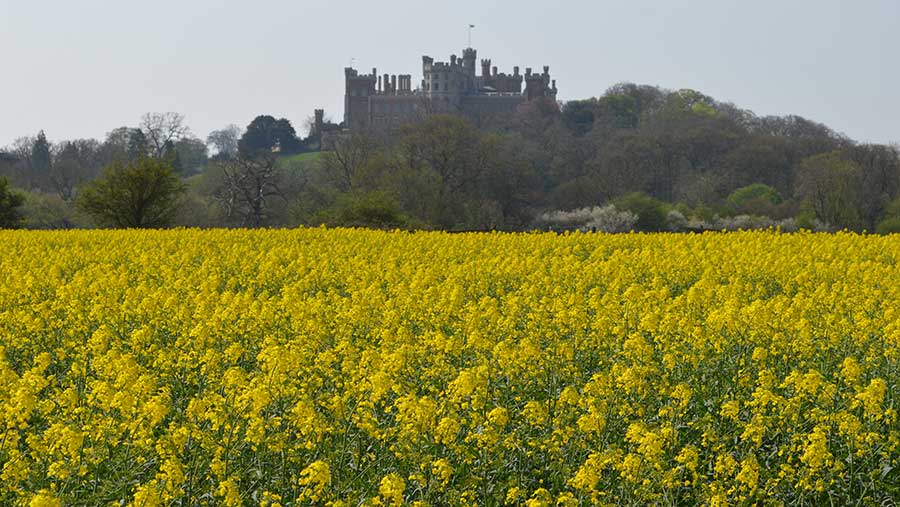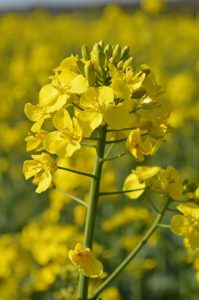Oilseed rape growers urged to be on alert for stem rot disease

Oilseed rape growers are being urged to scan disease alert updates this spring as late-flowering crops could heighten the risk of yield-damaging sclerotinia stem rot.
Flowering is about two to three weeks later this season after a cold and wet spring, and could expose rapeseed crops to weather more conducive to disease. Therefore the next few weeks will be critical.
See also: Crop Watch: Slowly catching up with fieldwork backlog
Sclerotinia stem rot disease can cause yield losses of up to 50% in severe cases, with infection requiring three main factors – the presence of disease inoculum, warm and humid weather and crops in flower.
David Leaper, oilseed rape specialist at agronomy group Agrii, warns there could be a higher risk of sclerotinia this season as the late flowering is coinciding with warmer conditions.
“Generally, the risk of sclerotinia will be higher as temperatures pick up and there is good moisture in the soil,” he told Farmers Weekly.
Many growers will have struggled to apply early fungicides and nitrogen fertiliser to crops in this wet spring, so crops may be more stressed and exposed to disease risk.
“A timely application of a sclerotinia spray will be more important than ever this season, especially if flowering gets extended,” he added.
Warning scheme
 Pete Berry, crop expert at consultants Adas, urged growers to watch the AHDB warning scheme for weather favourable to the disease’s development.
Pete Berry, crop expert at consultants Adas, urged growers to watch the AHDB warning scheme for weather favourable to the disease’s development.
“The period of flowering is critical, with sunny and dry weather being good for pod set and yields, while warm, showery weather can encourage disease,” he said.
The AHDB early warning system monitors 15 sites in England, Wales and Scotland, using a traffic light scheme. At the moment only one site in south Wales is showing a red light disease warning.
Fungicides that are used as flowering sprays to protect against the disease include the azole prothioconazole (Proline), the strobilurin azoxystrobin (Amistar) and those based on the SDHI boscalid (Filan and Pictor).
Owen Cligg, trading manager at co-operative farming group United Oilseeds, said late flowering will probably mean a shorter flowering period and this could hit yields at harvest.
He estimates the crop in the ground at 600,000ha and with a forecast 3.5t/ha yield, this would give a 2.1m tonne national crop. This compares to last year’s smaller crop at 563,000ha with a 3.9t/ha yield giving a 2.2m tonne crop.
Infection risk
Oilseed rape crops are at the highest risk of infection when relative humidity is greater than 80% and air temperatures are at or above 7C for more than 23 hours.
Sclerotinia disease can develop in the spring when sclerotia germinate in the soil and release airborne spores that can be carried onto flowering petals. When the petals fall they can stick to leaves, or leaf axils, and act as a food source for the disease.
If the lower main stems are infected, leading to white stem lesions, this can result in the loss of whole oilseed rape plants.
Crops should be monitored from the onset of flowering, as early flowering infections are usually the most damaging to yield, say experts.
Weather-based alerts from the AHDB at the yellow-bud stage onwards will indicate the risk of infection and a protectant fungicide spray should then be considered.

